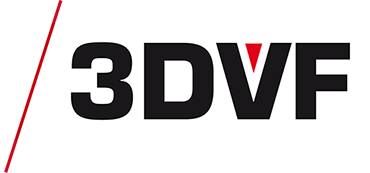This article is also available in:
![]() Français
Français
Last November, animator Adrien Liv shared with us his work on The Wild Robot from DreamWorks Animation.
Now, he takes us behind the scenes of another film he worked on: Mary Poppins Returns! Adrien was part of the animation team for this movie, released in 2018. He shares with us some of the impressive used on this project, with a mix of 2D and 3D animation. And he shares a breakdown of the Royal Dowtown Bowl sequence!
In 2019, Mary Poppins Returns garnered 20 awards, including the prestigious AFI Award for Movie of the Year, along with an Annie Award for Best Animated Special Production and Outstanding Achievement for Character Animation in a Live Action Production.
What do Who Framed Roger Rabbit, Space Jam, and Mary Poppins Returns have in common? Each film boasts a captivating story paired with the seamless integration of 2D animation into real-world environments. Whether it’s Bugs Bunny kissing Michael Jordan or Lin-Manuel Miranda dancing with animated penguins, the magic comes from talented 2D artists meticulously hand-drawing every frame.
For Mary Poppins Returns, the studio responsible for this remarkable achievement was Framestore. The film’s return to Cherry Tree Lane received acclaim as “practically perfect in every way,” with Framestore playing a vital role in its enchanting aesthetic. As the lead VFX company for the film, Framestore delivered an impressive 470 shots across 32,000 frames that enhanced key musical sequences and contributed to the film’s rich, stylized look.

One of the film’s standout moments transports our beloved characters—Mary Poppins, lamplighter Jack, and the Banks children—into a vibrant animated world. This scene features a lively musical number filled with dancing penguins and culminates in an exhilarating carriage chase, showcasing the collaboration between Framestore’s Montreal team and animators at Duncan Studios. As VFX Supervisor Christian Kaestner notes, “Integrating the 2D and 3D universes definitely threw up some challenges”

Ken Duncan, founder of Duncan Studios, emphasized that the goal was to create an illustrative visual style for the scenes. He reflected, “We were fortunate to have access to technology that wasn’t available during the production of the original Poppins or Roger Rabbit, allowing for greater freedom with camera motion.” He highlights the importance of character interaction: “for instance, when the hummingbird lands on Mary’s finger, we needed the bird to tip its hat, have Mary react to it, and then it moves on. It was the one thing that Rob wanted, to make sure that the humans and the animation characters connected as if they were in the same universe so that was really important.”
Here is the “Royal Doulton Bowl” sequence, with the carriage and the main characters in a mix of 2D and 3D elements, followed by a breakdown of a shot:
Step-by-Step Breakdown of a Shot from the Bowl Carriage Sequence:
- 2D Rough Layout: Flat artwork of the path/trees were wrapped onto a cg element.

- CG Rough Layout: A CG carriage, and bowl were built. Duncan Studios animated a path of motion for the carriage along the surface.

- Rough Animation: Borja Montoro, who roughed out the animation of Clyde and Shamus, with the steps matching the beat of the music.

- Rough Composite: A rough composite of the animation with background artwork placed onto the bowl.

- Clean-up, Ink&Paint, EFX: The characters were cleaned up and painted. Seamus’s reigns were hand animated.

- Final Comp: All the various elements composited

For this specific sequence, 3D animation was necessary because no footage was recorded for Lin-Manuel Miranda, Emily Blunt, and the children. Framestore animators utilized keyframe animation to bring this shot to life. Achieving realism in animation is challenging due to the intricate details required in movement. The children and Jack had to hold onto the carriage while Mary sang, necessitating a blend of acting and singing knowledge to develop polished, photorealistic animation.
All parts of the body are interconnected. For facial animation, for example, the eyebrows can pull the upper eyelids, while the corners of the mouth influence the nostrils and cheeks—these elements compress and stretch in tandem. This principle applies to the body as well; when an arm rises, it also lifts the shoulder, which rotates the chest, affecting the neck and head in succession. Keeping these principles in mind enhances the organic quality of the animation, adding a layer of believability.
To create a more natural and fluid animation, animators can manipulate the curves in the graph editor, which allows them to fine-tune the timing of movements. For example, when animating facial features, if the movement of the eyebrows causes the upper eyelids to close, the animator typically begins by copying the motion curves from the eyebrows to the eyelids.
However, if both actions are set to occur at the exact same time, the movement can appear flat or unnatural without the organic quality of real-life motion. To enhance the realism and achieve a more lifelike effect, the animator adjusts the timing: they would shift the eyebrow motion slightly so that it occurs just before the eyelids begin to move. This small delay in the eyelid movement creates a sequential pulling effect, making the overall animation feel more cohesive and lifelike, mimicking the way muscles interact in real human expressions.

I hope this article has provided valuable insights by showcasing historic technologies. By understanding their impact and significance, we can better inform and shape the technologies of tomorrow.
Adrien Liv

